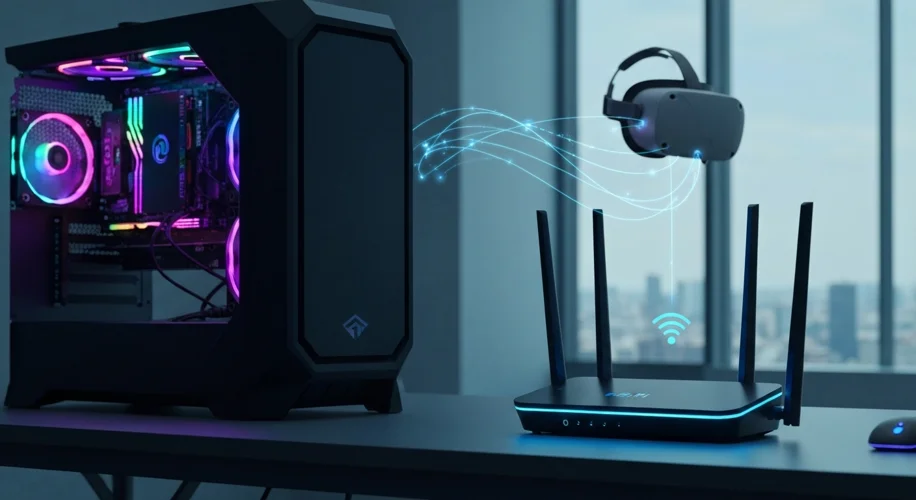Okay, so you’ve got a killer VR headset and a beast of a PC, ready to dive into those amazing PC VR experiences wirelessly. Awesome! But if you’re getting stuttering, dropped frames, or just a generally laggy connection, your router might be the bottleneck. Let’s talk about getting that silky-smooth, immersive experience you’re craving.
When it comes to wireless PC VR, the router is basically the air traffic control for your virtual world. It needs to be fast, stable, and handle a lot of data reliably. Here’s the lowdown:
The Case for a Dedicated Router
I’m not gonna lie, using your main, everyday router for PC VR can be a gamble. These routers often juggle internet traffic for your whole house – streaming, downloads, smart devices, you name it. This can lead to congestion and interference, which is the enemy of good VR.
A dedicated router, on the other hand, is like giving your VR headset its own VIP lane. You connect your PC to this router via Ethernet, and then your VR headset connects wirelessly to it. This isolates your PC VR traffic, dramatically reducing the chance of other devices messing with your connection.
What to Look For in a VR Router:
- Wi-Fi 6 (802.11ax) or Wi-Fi 6E: This is pretty much the standard now for good reason. Wi-Fi 6 offers faster speeds, better efficiency, and can handle more devices simultaneously compared to older standards. Wi-Fi 6E adds the 6 GHz band, which is less crowded and can provide even lower latency – a big win for VR.
- Dual-Band or Tri-Band: Dual-band routers broadcast on 2.4 GHz and 5 GHz. Tri-band adds another 5 GHz or a 6 GHz band (in Wi-Fi 6E). More bands mean you can dedicate a band purely for your PC VR connection, minimizing interference from other wireless devices.
- Good QoS (Quality of Service): This feature lets you prioritize certain devices or traffic. You’ll want to set your PC VR connection as the highest priority.
- Wired Ethernet Ports: You absolutely want to connect your PC to the router with an Ethernet cable. This is way more stable and faster than Wi-Fi for the PC itself.
User Experiences and Recommendations:
From what I’ve seen and heard from fellow VR enthusiasts, routers from ASUS and TP-Link are consistently praised for their performance in PC VR setups.
- ASUS ROG Rapture GT-AX11000 (or similar high-end ASUS Wi-Fi 6 routers): These are often cited as fantastic options. They usually have robust features, excellent performance, and gaming-focused optimizations. The dedicated gaming port on some models is great for ensuring your PC always gets top priority.
- TP-Link Archer AX6000 (or comparable Wi-Fi 6/6E models): TP-Link also offers some really solid routers that provide great speeds and reliability without breaking the bank compared to some ultra-premium options. They often have user-friendly interfaces too.
Setting It Up:
- Positioning is Key: Place your dedicated router close to your usual VR play space.
- Connect PC via Ethernet: Wire your PC directly to the router.
- Connect Headset Wirelessly: Connect your VR headset to the router’s 5 GHz or 6 GHz band (if available).
- Configure QoS: Log into your router’s settings and give your PC VR connection (or the headset’s MAC address) the highest priority.
The Catch?
Okay, so here’s the catch: dedicated routers, especially the higher-end Wi-Fi 6E models, can be an investment. But if you’re serious about getting that seamless wireless PC VR experience without constant frustration, it’s honestly one of the best upgrades you can make. It makes a world of difference!
What routers are you guys using for PC VR? Any killer tips I missed? Drop them in the comments below!

